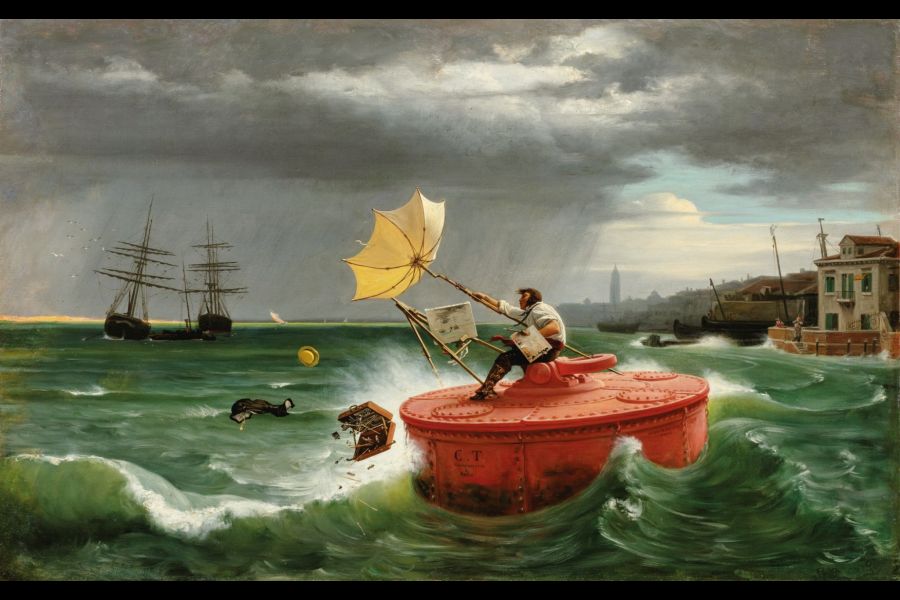Penny-Lynn Cookson
Special to Niagara Now/The Lake Report
Friday last, a cold wind was sending branches, leaves and flower petals all over lawns and streets in our town. Birdsong, bird sightings and gardeners were noticeably absent.
The lake, no longer enticing, was forbidding, grey and choppy. An artist friend, always attuned to the present and unpredictable in art and life, sent an image of a painting to me that morning titled “The Gust of Wind,” soon up for auction at Sotheby’s Paris. How appropriate it was to the day – and what a discovery. I was totally unfamiliar with this artist and his work.
Jean-Jules-Antoine Lecomte du Nouÿ (1842-1923) was a Parisian academic artist, primarily in the Orientalist style, during turbulent social and political changes in France when art movements were in flux from Neo-Classicism, to Impressionism, to Neo-Impressionism, to Fauvism, to Cubism.
He studied at the atelier of Charles Gleyre, was mentored at École des Beaux-Arts by the renowned academician Jean-Léon Gérôme, exhibited at numerous salons and became a respected artist of detailed mythological, historic and religious paintings.
At 23, he travelled to Cairo where he became instantly captivated by its exoticism and thereafter spent years travelling in Egypt, Greece, Turkey and Italy. The romantic appeal of Orientalist works featuring oasis, harem and mosque scenes had been inspired by French colonial conquests and travel in Egypt, the Levant and Algeria.
When these subjects fell out of favour, Lecomte du Nouÿ’s later years were spent in Romania as the painter to the Romanian royal family. He returned to France to die in Paris in 1923. Few of his paintings are in museum collections, most being privately held. He is one of those accomplished artists who “disappear,” due to changing taste and the vagaries of the art market.
“The Gust of Wind” is a complete departure for Lecomte du Nouÿ as a subject and approach in style. It is so unlike his usual oeuvre that one wonders what possessed him to do it? Apparently, it was done as a joke. A terrific work of humour rare in French art.
It is an artist’s rendition of an artist who has set out for a pleasant “en plein air” creative day and is caught in a most unexpected situation of being literally “at sea.”
A thunderstorm, rain and wind have come up suddenly and everything has gone flying – his jacket into the water, his hat spinning through the air, paintbox, brushes, chalks and tubes of paint are tumbling into the waves, the easel is toppling.
He desperately holds on to his sunshade umbrella blown inside out, his own position now untenable and precarious on the tilting metal buoy. What craziness! Why is he out there?
His tumbling canvas reveals he was painting the two ships in the distance. The sails of those anchored ships are down but they are heaving about in the currents, waves and wind. Seagulls wheel overhead riding the updrafts near the masts.
On shore, curtains billow out of open windows of buildings, a woman leans forward against the walled terrace anxiously watching the drama and a man stands at the dock stairs, hands to his face, hollering to the artist.
Who will rescue him? Is all lost? Is this the uncertain fate of the artist? Paradoxically, it became his most sought-after painting.
Penny-Lynn Cookson is an art historian who taught at the University of Toronto for 10 years. She was also head of extension services at the Art Gallery of Ontario. Watch for her upcoming lecture series at the Pumphouse Arts Centre and RiverBrink Art Museum.










